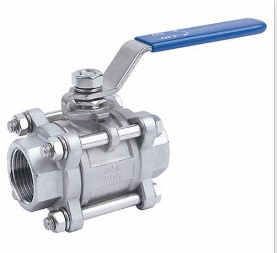Flanged Butterfly Valve Design and Applications for Efficient Flow Control
Understanding the Butterfly Valve with Flange End A Comprehensive Overview
Butterfly valves are widely recognized for their simplicity, efficiency, and versatility in various piping systems. One of the most popular configurations is the butterfly valve with a flange end. This design is essential for engineers and technicians involved in fluid control systems, as it offers numerous advantages in installation, operation, and maintenance.
What is a Butterfly Valve?
A butterfly valve is a quarter-turn valve that uses a rotating disc to regulate the flow of liquid or gas through a pipe. When the valve is open, the disc is turned parallel to the flow; when closed, it is turned perpendicular to the flow. This design allows for quick and efficient flow control, making butterfly valves popular in many industries, including water treatment, chemical processing, HVAC systems, and more.
Flange End Connection
Flange ends are integral to the design of butterfly valves, enabling them to be securely attached to the piping system. Flanges are flat pieces of metal that have holes for bolts, facilitating a strong and leak-proof connection. The use of flange ends is particularly beneficial in large diameter applications, where the structural integrity of the connection is paramount.
The flanged connection allows for easier installation and maintenance, as the valve can be easily bolted to the pipe flanges without the need for additional fittings or welds. This reduction in installation complexity not only saves time but also minimizes labor costs, making flange-end butterfly valves a cost-effective choice.
Types of Flange Standards
Butterfly valves can be manufactured to meet various flange standards, such as ANSI, DIN, and JIS. Each standard specifies the dimensions and pressure ratings for the flanges, ensuring compatibility with existing piping systems. When selecting a butterfly valve with a flange end, it is crucial to choose a valve that corresponds to the standards of the installation site, as this guarantees a proper fit and optimal performance.
Key Advantages of Flange End Butterfly Valves
1. Ease of Installation Flanged butterfly valves can be quickly installed with standard bolts and nuts, reducing the time and effort required for fitting.
2. Maintenance-Friendly Since they can be easily disconnected from the pipe, maintenance tasks can be performed without disturbing the entire piping system.
butterfly valve flange end

3. Versatile Applications Due to their range of sizes and materials, flange end butterfly valves can be used in various applications, from HVAC systems to wastewater treatment plants.
5. Space-Saving Design Compared to other valve types, butterfly valves have a smaller footprint, making them ideal for installations with limited space.
6. Durability Made from robust materials, flange end butterfly valves are designed to withstand harsh conditions, including high temperatures and corrosive environments.
Considerations When Choosing a Butterfly Valve
When selecting a butterfly valve with a flange end, several factors must be considered
- Material The valve body material should be compatible with the fluid being processed. Common materials include cast iron, stainless steel, and PVC.
- Size Ensure that the valve size matches the pipe diameter and aligns with the intended flow requirements.
- Pressure Rating Confirm that the valve can handle the maximum operating pressure of the system.
- Actuation Type Butterfly valves can be operated manually or automated using actuators. The choice depends on the application's specific requirements.
Conclusion
In summary, the butterfly valve with a flange end is an essential component in modern piping systems. Its design provides ease of installation, maintenance, and operation while ensuring reliable flow control. By understanding the features, advantages, and considerations associated with flange end butterfly valves, engineers and technicians can make informed decisions that enhance system efficiency and performance. With the ever-evolving demands of various industries, these valves will undoubtedly continue to play a pivotal role in fluid control applications for years to come.
-
Why Choose a Brass Gate Valve for Superior Performance and DurabilityNewsMay.09,2025
-
Reliable Flow Control Begins with a High-Performance Flange Butterfly ValveNewsMay.09,2025
-
Reliable and Rugged: Why the Lug Type Butterfly Valve Is Dominating the MarketNewsMay.09,2025
-
Manual Gate Valve: A Comprehensive Look at Performance, Durability, and DesignNewsMay.09,2025
-
Engineered for Precision: Why the Stainless Ball Valve Sets a New StandardNewsMay.09,2025
-
Ductile Iron Valve: The Perfect Solution for Reliable Flow ControlNewsMay.09,2025
-
Compact Powerhouse: Why the Wafer Type Butterfly Valve Is an Industry FavoriteNewsMay.09,2025




